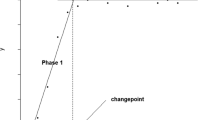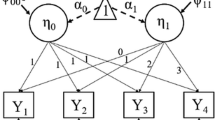Abstract
Regression equations to predict h index trajectories up to 10 years ahead have been recently derived from the analysis of data from a large calibration sample of neuroscientists. These equations were regarded by their proponents as potentially useful decision aids for funding agencies, peer reviewers, and hiring committees. This paper presents the results of a validation study in a sample of Spanish psychologists including neuroscience psychologists for whom the regression equations would be expected to apply but including also psychologists in other areas of the social/behavioral sciences for whom the applicability of the regression equations might be questionable. The results do not support the equations for any of the two groups: Errors of prediction were generally large and mostly positive, the more so the larger was the value of the h index used to make the prediction. Although the validity of these regression equations could still be investigated in additional cross-validation studies, an alternative approach to predicting future h indices is outlined and illustrated in this paper.



Similar content being viewed by others
Notes
It should be noted that Acuna et al.’s (2012) equations imply the true values for these quantities, not the values arising from a particular database of limited coverage. The Discussion will comment on the reasons that this is not responsible for the inaccurate predictions reported below.
References
Acuna, D. E., Allesina, S., & Kording, K. P. (2012). Predicting scientific success. Nature, 489(7415), 201–202.
Archambault, É., Campbell, D., Gingras, Y., & Larivière, V. (2009). Comparing bibliometric statistics obtained from the Web of Science and Scopus. Journal of the American Society for Information Science and Technology, 60(7), 1320–1326.
Bar-Ilan, J. (2008). Which h-index?: A comparison of WoS, Scopus and Google Scholar. Scientometrics, 74(2), 257–271.
Bouabid, H. (2011). Revisiting citation aging: A model for citation distribution and life-cycle prediction. Scientometrics, 88(1), 199–211.
Browne, M. W. (2000). Cross-validation methods. Journal of Mathematical Psychology, 44(1), 108–132.
Burrell, Q. L. (2003). Predicting future citation behavior. Journal of the American Society for Information Science and Technology, 54(5), 372–378.
Burrell, Q. L. (2007). Hirsch’s h-index: A stochastic model. Journal of Informetrics, 1(1), 16–25.
Burrell, Q. L. (2012). Alternative thoughts on uncitedness. Journal of the American Society for Information Science and Technology, 63(7), 1466–1470.
Chirici, G. (2012). Assessing the scientific productivity of Italian forest researchers using the Web of Science, SCOPUS and SCIMAGO databases. iForest, 5, 101–107.
De Groote, S. L., & Raszewski, R. (2012). Coverage of Google Scholar, Scopus, and Web of Science: A case study of the h-index in nursing. Nursing Outlook, 60(6), 391–400.
García-Pérez, M. A. (2009). The Hirsch h index in a non-mainstream area: Methodology of the behavioral sciences in Spain. Spanish Journal of Psychology, 12(2), 833–849.
García-Pérez, M. A. (2010). Accuracy and completeness of publication and citation records in the Web of Science, PsycINFO, and Google Scholar: A case study for the computation of h indices in Psychology. Journal of the American Society for Information Science and Technology, 61(10), 2070–2085.
García-Pérez, M. A. (2011). Strange attractors in the Web of Science database. Journal of Informetrics, 5(1), 214–218.
García-Pérez, M. A. (2012). An extension of the h index that covers the tail and the top of the citation curve and allows ranking researchers with similar h. Journal of Informetrics, 6(4), 689–699.
García-Pérez, M. A., & Núñez-Antón, V. (2013). Correlation between variables subject to an order restriction, with application to scientometric indices. Journal of Informetrics. doi:10.1016/j.joi.2013.01.010
Glänzel, W., & Schubert, A. (1995). Predictive aspects of a stochastic model for citation processes. Information Processing and Management, 31(1), 69–80.
Jacsó, P. (2008a). The pros and cons of computing the h-index using Scopus. Online Information Review, 32(4), 524–535.
Jacsó, P. (2008b). The pros and cons of computing the h-index using Web of Science. Online Information Review, 32(5), 673–688.
Jacsó, P. (2009). The h-index for countries in Web of Science and Scopus. Online Information Review, 33(4), 831–837.
Lin, L. I.-K. (1989). A concordance correlation coefficient to evaluate reproducibility. Biometrics, 45(1), 255–268.
Meho, L. I., & Rogers, Y. (2008). Citation counting, citation ranking, and h-index of human-computer interaction researchers: A comparison of Scopus and Web of Science. Journal of the American Society for Information Science and Technology, 59(11), 1711–1726.
Schreiber, M. (2013). How relevant is the predictive power of the h-index? A case study of the time-dependent Hirsch index. Retrieved February 1, 2013, from http://arxiv.org/abs/1301.2060v1.
Acknowledgments
This research was supported by Grant PSI2009-08800 (Ministerio de Ciencia e Innovación, Spain).
Author information
Authors and Affiliations
Corresponding author
Rights and permissions
About this article
Cite this article
García-Pérez, M.A. Limited validity of equations to predict the future h index. Scientometrics 96, 901–909 (2013). https://doi.org/10.1007/s11192-013-0979-7
Received:
Published:
Issue Date:
DOI: https://doi.org/10.1007/s11192-013-0979-7




